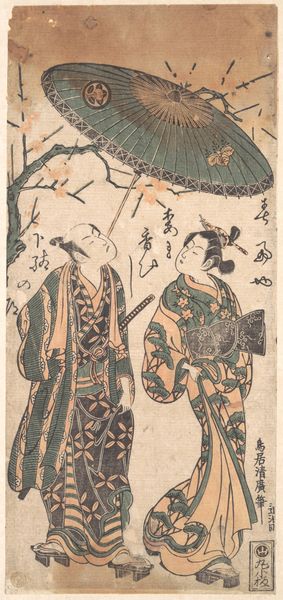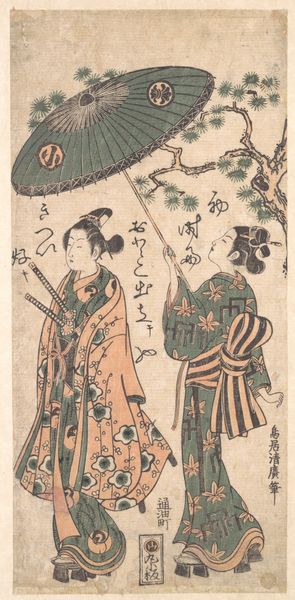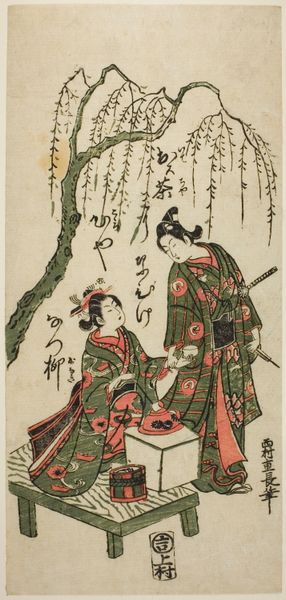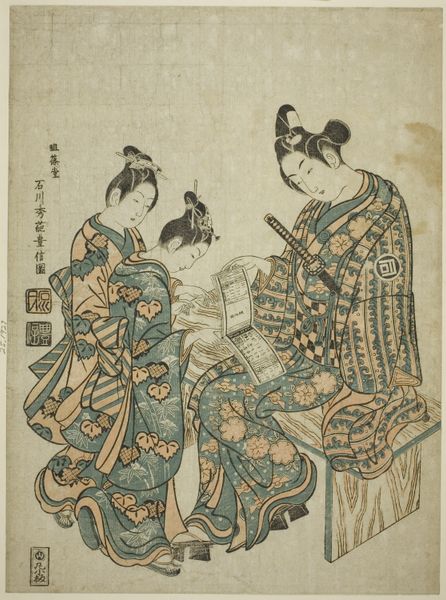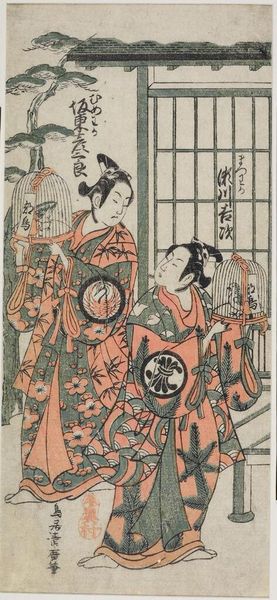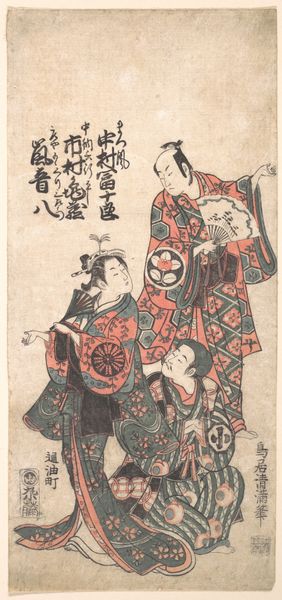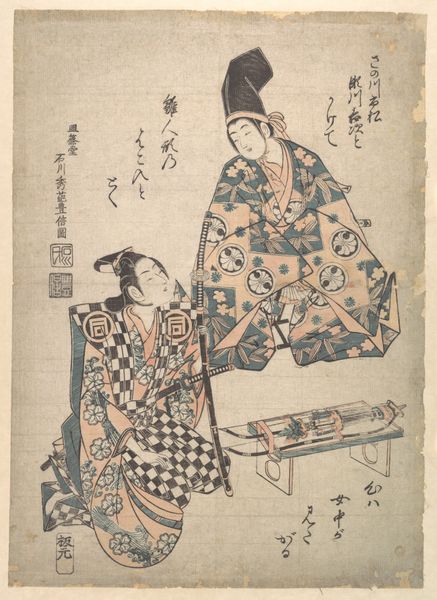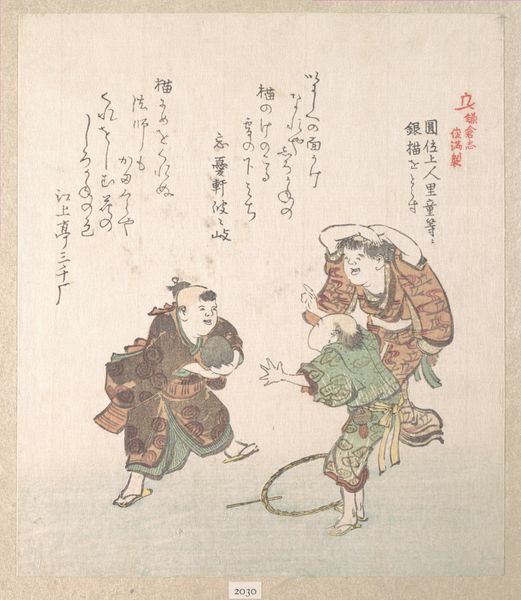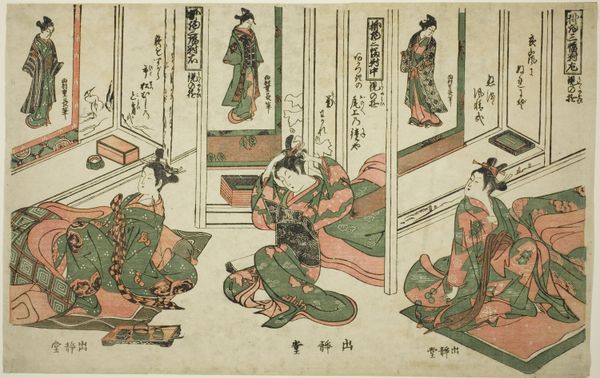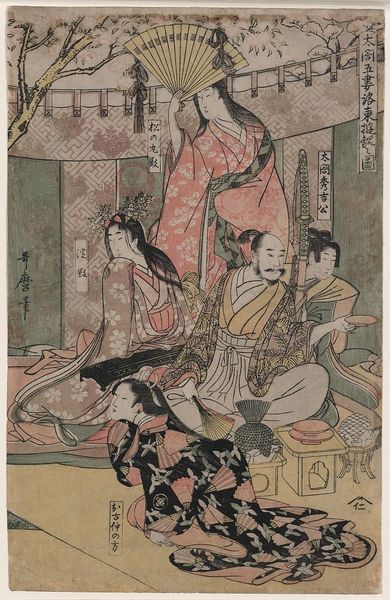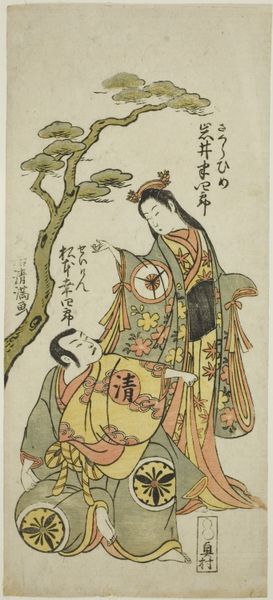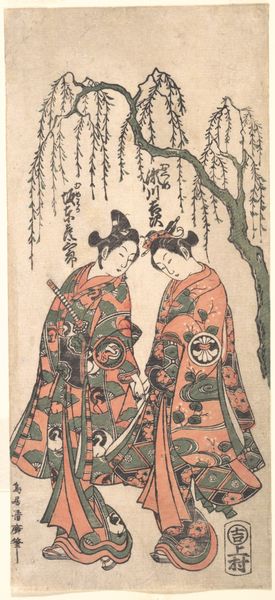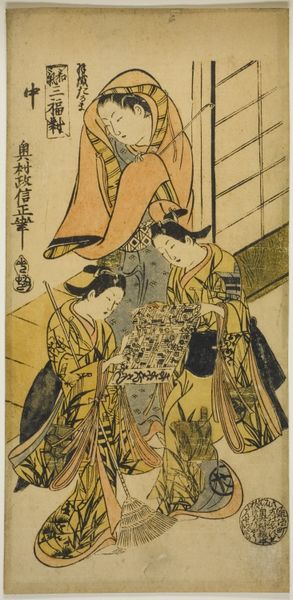
The Actors Ichimura Kamezo I as Sengokuya Ihei and Sanogawa Ichimatsu I as his wife Omatsu in the play "Kashiwa ga Toge Kichirei no Sumo," performed at Ichimura Theater in the eleventh month, 1755 1755
0:00
0:00
#
toned paper
#
ink painting
# print
#
asian-art
#
japan
#
personal sketchbook
#
linocut print
#
ink drawing experimentation
#
sketchbook drawing
#
watercolour bleed
#
watercolour illustration
#
sketchbook art
#
watercolor
Dimensions: 16 3/4 × 11 3/4 in.
Copyright: Public Domain
Curator: This print by Torii Kiyohiro, made in 1755, presents a vibrant glimpse into Edo-period Japan, now held at the Art Institute of Chicago. Editor: It strikes me as a bit…unbalanced? The figures feel stiff, almost like paper dolls pasted onto a flat plane, especially with those peculiar geometrical shapes floating above. Curator: Ah, yes. Let’s delve into the composition. We see actors Ichimura Kamezo I and Sanogawa Ichimatsu I depicted as characters from the play "Kashiwa ga Toge Kichirei no Sumo.” Notice the precise linework, the deliberate arrangement of colors, the juxtaposition of geometric and organic patterns on their robes… Kiyohiro's use of line variation creates depth, wouldn't you agree? Editor: Depth, perhaps suggested, but what truly stands out are those textual elements encroaching the scene! The artist is purposefully disrupting any illusionism, making us aware that this is also an advertisement—a carefully constructed representation designed to sell something. The play, the actors, and perhaps even a certain vision of marital life are being commodified. Curator: Intriguing point. Considering the medium – a woodblock print - mass production for a wider audience was absolutely a factor here. One also might observe the subtle asymmetry in their poses; a conscious choice, enhancing visual interest and movement within the limited space. And what do you make of the subtle watercolor washes over areas like their robes and the background? Editor: Those washes soften what would otherwise be rigid figures, hinting at fluidity within very defined gender roles in 18th-century Japanese theater. Their stances seem almost performative of these roles. Note the man’s reserved posture in comparison to the exaggerated gestures of the woman. And, perhaps I'm overreaching, the adjacent vendor's stall for soba may evoke the growing merchant class. Curator: Your contextual interpretations broaden our understanding of how visual elements are intentionally arranged for complex meanings! For me, the sheer intricacy of the patterning commands immediate focus. Editor: And for me, it’s the cultural context embedded within those very patterns that elevates its impact! Thank you, Torii Kiyohiro, for presenting a work that transcends time and reveals lasting messages about humanity!
Comments
No comments
Be the first to comment and join the conversation on the ultimate creative platform.
